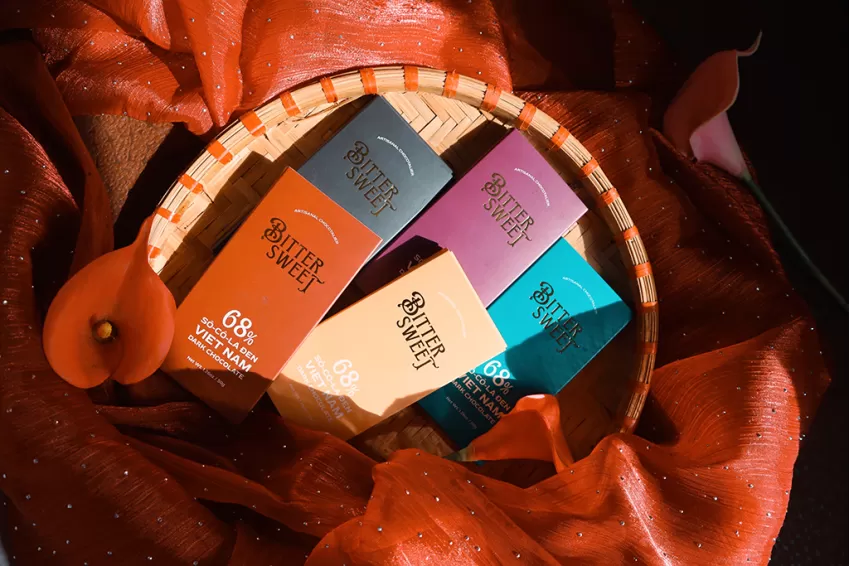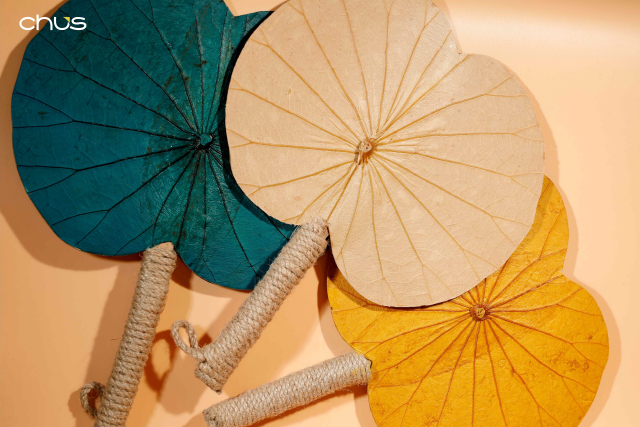The Flourishing Periods Of Vietnamese Ceramics
Vietnamese ceramics are a long-standing traditional handicraft product, imbued with national cultural identity. With a history of development of more than 7,000 years, Vietnamese ceramics has gone through many ups and downs, changing along with the flow of history, leaving a brilliant mark in culture and art. As Vietnamese people, we should be individuals to spread and maintain this culture for future generations. So let's learn about Vietnamese ceramics through the ages with CHUS!
Ceramics through the ages
Prehistoric
The history of Vietnamese ceramics spans thousands of years, with many periods of brilliant development, reflecting changes in culture, society and production techniques. According to researchers, over a long period of time since the invention of pottery in prehistoric times, the main raw material used was clay mixed with sand. The patterns on ceramic are very simple, mostly just diagonal lines and water waves, created when the product is still wet.
During the research process, the fingerprints imprinted on the ceramic showed that most of them were created by the skillful hands of women. Pottery is fired outdoors, at temperatures usually below 700°C, creating a unique characteristic for prehistoric ceramics. Ceramic products of this period were mainly containers and cooking utensils, serving essential needs in life.
Bronze age
Bronze Age pottery is an important part of Vietnam's cultural heritage treasure. The birth of the ceramic wheel marked an important turning point in manufacturing techniques. Thanks to the turntable, ceramic products are shaped more accurately, evenly and diversely.
Bronze Age pottery not only includes familiar cooking utensils, but also includes ceramic products used for storage, jewelry, eating utensils, working tools, and artistic ceramics. Pattern images are also rich and vivid, expressing many different themes than in the previous period. Some products were rubbed with a layer of different colored clay, which had a great influence on the patterns and designs of bronze objects of the same period.
Iron Age
The Iron Age period marked the opening of a new page for the Vietnamese ceramic industry. Pottery kilns appear in almost all regions of the country, demonstrating the strong development of the ceramic industry.
However, the ceramics at this time were still young and unfinished, but possessed a rustic and rustic feature, carrying a unique aesthetic value. Compared to previous periods, there was a big difference in appearance. shape as well as pattern.
Unlike previous periods, men played an important role in the ceramic production process, marking a change in the division of labor. Since the 2nd century BC, when Vietnam was under the yoke of Northern feudalism, Vietnamese handmade ceramics continued to develop on a traditional basis, while also absorbing strong influence from Chinese ceramics.
Lý - Trần dynasties
Until the 10th century, after more than a thousand years of Chinese feudal domination, Vietnam entered the Ly - Tran period, opening an important turning point in the nation's history. Along with the restoration of independence and strong development in all aspects, Vietnam's ceramic industry also achieved brilliant achievements, consolidating a solid position in the world ceramic market.
This period saw an unprecedented expansion of ceramic production. Pottery kilns sprang up everywhere, from Thanh Hoa, Hanoi to Nam Dinh region, creating a centralized professional ceramic production system.
Ceramic types are also extremely diverse, meeting all human daily needs. From containers such as bowls, plates, bowls, jars, jars... to eating utensils such as chopsticks, spoons, knives,... or decorative items such as vases, ceramic statues, screens,... everything All are exquisitely crafted, bearing the mark of the era.
After the 14th century
After the 14th century, Vietnamese ceramics continued to develop and make new advances, marking the diversity of techniques, designs and patterns. Most prominent is the appearance of many famous ceramic villages such as Bat Trang, Chu Dau, Phu Lang,... with their own unique ceramic products.

Ceramics after the 14th century were fired at higher temperatures, making the ceramic bones harder and smoother. Handmade pottery making methods and decorative techniques were also improved, with many new methods such as engraving, drawing under glaze, printing patterns, etc. Besides, in this era there were many types of pottery. A variety of shapes such as vases, vases, cups, plates, decorative statues,...
Since the early 19th century
The intersection of traditional and modern ceramics created unique and sophisticated 19th-century Vietnamese ceramic products. Vietnamese ceramics of this period were not only used domestically but also exported to European countries.

However, due to the impact of war and the introduction of new materials, the Vietnamese ceramic industry in the 19th century gradually went into decline. However, with the efforts of artisans and the attention of the government, the Vietnamese ceramic industry has gradually revived and developed strongly in the 20th and 21st centuries.
Modern ceramics began in the 21st century
Starting from the 21st century, Vietnamese ceramics have had a strong revival. Traditional handicraft pottery villages are restored and developed, combining modern production techniques to create ceramic products that are both rich in national cultural identity and meet market demand. Tu Hu, Dong Gia, HCERAMIC, Minh Tien Ceramics or Minh Long... are reputable, high-class and safe ceramic brands, favored by domestic and international consumers.

Technically, 21st century Vietnamese ceramics are applied with many modern techniques such as electric kiln firing, decal printing,... to help improve product quality. Today's ceramic products are diverse in style and design, from vases, jars, cups, plates to decorative statues, reliefs,... meeting all the use and aesthetic needs of customers.

In terms of design, 21st century Vietnamese ceramics represent a delicate combination of traditional beauty and modern trends. Traditional motifs are uniquely stylized, combined with modern colors, creating ceramic products that are both rich in Vietnamese cultural identity, luxurious and sophisticated.
Vietnamese ceramics in the 21st century are not only handicraft ceramic products but also cultural and historical symbols of the nation. Thanks to the efforts of artisans, Vietnamese ceramics are increasingly reaching out to the international market, contributing to promoting the image of the country and people of Vietnam to international friends.

Conclusion
Vietnamese ceramics is a distinct flow, converging the quintessence of national culture, vividly reflecting the material, spiritual life and aesthetic values of Vietnamese people through historical periods. To this day, these cultural values are still enthusiastically accepted by young people. Evidence that there are many brands that produce and sell products from handmade ceramics to modern ceramics. Let's explore ceramic products right on CHUS and join hands to spread this unique Vietnamese culture!








